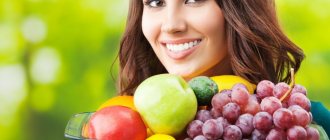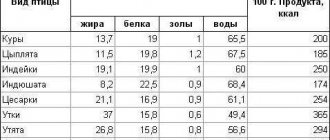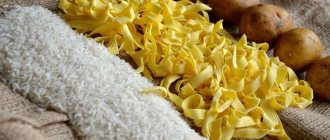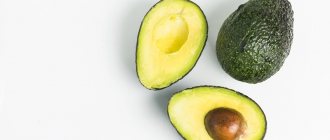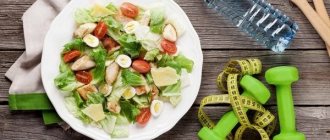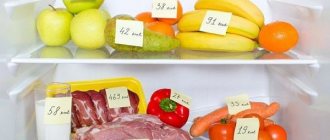What is protein
One of the three nutrients important for the full functioning of the body is protein. Most tissues contain it in large quantities, especially muscle tissue. This high molecular weight compound consists of 22 amino acids. It breaks down on them in the intestinal tract under the influence of enzymes. Amino acids are divided into three large groups:
- Replaceable - the body synthesizes them independently.
- Irreplaceable - independent synthesis is impossible. Therefore, it is important that the menu consists of those products that contain them.
- Conditionally replaceable - their source is also food. But the body needs them in certain cases, for example, during stress or illness.
It is important to eat properly, in a balanced manner, so that amino acids can have a complex effect in order to create a strong structure of the body.
To break down protein, the body spends a considerable amount of time and energy. Every day, the cells of the body need to receive the daily requirement of protein for renewal and restoration. And it is 1.5 g per kilogram of body weight. With protein deficiency, the body begins to use protein reserves stored in muscle tissue. Dystrophy gradually develops: muscles are lost, the skin becomes flabby and weak. Such weight loss can be called not only useless, but also detrimental to health.
Chicken or turkey without skin
White meat is the leanest option, but even dark meat can be a good choice if you remove the skin from the poultry. Chicken or turkey will give you 25 grams. high quality protein, and they also contain vitamin B and selenium. Roast a whole chicken for Sunday dinner, and use the leftovers for salad on Monday and sandwich filling on Tuesday.
Why is protein so important?
Why is it important? Because, as mentioned above, when broken down, the protein breaks down into amino acids, the main actions of which are as follows:
- formation of muscle tissue;
- accompanying redox cellular processes;
- maintaining healthy hair, nails, and skin.
Children especially need protein during the period of active growth. Athletes or simply those who want to improve their figure also need a sufficient supply of protein.
Types of proteins
It is customary to divide proteins according to their amino acid composition, the degree of their digestibility, and their origin. Let's talk about the third classification in more detail. They are divided into plant and animal proteins.
Animal protein is considered complete because it contains all the essential amino acids, which distinguishes it from plant protein. But by combining different products - sources of plant protein, it is quite possible to “put together” all the necessary components.
Vegetable protein is rich in minerals and vitamins, but it contains significantly fewer calories than the opposite organic compound. Only nuts and seeds have high fat content.
In large quantities, plant foods contain fiber, which has a cleansing effect on the intestinal tract. Therefore, only 70% of vegetable protein is absorbed by the body, because food simply does not stay in the intestines for a long time. You will have to eat much more of these foods to meet your daily protein requirement.
Eating this type of food is good for those who are losing weight or have diabetes. The reason for this is the low glycemic index and low calorie content. Their use is recommended for people suffering from high blood pressure and diseases of the cardiovascular system, as they do not increase cholesterol levels in the blood.
The whole truth about plant protein
Proteins are the foundation of our body. They participate in the growth of cells and muscle tissue, influence the proper functioning of the immune, nervous and metabolic systems. Therefore, we must receive protein in the required quantity. Depending on weight, a woman needs 46 g of protein per day, and a man needs 56 g.
What are proteins and what are they?
Proteins are a collection of amino acids. When we talk about the benefits of protein, we are really talking about the benefits of amino acids. Protein is just packaging for them. For normal life, a person constantly needs 20 different amino acids. They are irreplaceable - those that the body does not produce itself and which enter it only with food. There are 8 of them: phenylalanine, lysine, threonine, methionine, valine, leucine, tryptophan, isoleutine. There is also histidine, but this amino acid is essential only in children; with age, the body begins to synthesize it on its own. Therefore, it is often called conditionally irreplaceable. The body synthesizes non-essential amino acids on its own or absorbs it from food. There are 11 of them: alanine, arginine, asparagine, glutamate, glutamine, carnitine, glycine, ornithine, proline, serine and taurine.
Proteomics is a scientific field in biology that studies proteins. The term protein was introduced in 1928 by the Swedish chemist Jons Jakob Berzelius. It is derived from the Greek word proteos, which means “most important.”
Proteins can be of animal or plant origin. Throughout the twentieth century, debates continued in scientific circles about whether giving up animal food would harm a person. One camp argued that there was no way to refuse. Because it is proteins of animal origin that are considered complete: all the essential amino acids can be found in their composition. The second camp cited as evidence the example of the most powerful animals on earth: rhinoceroses, hippopotamuses and elephants. They eat only plant foods, which means they receive exclusively plant proteins. Agree, they look like absolutely healthy creatures. Yes, all essential amino acids cannot be found in plant foods at once, but if the diet is varied, it combines legumes, grains, vegetables and fruits, then a person will be provided with everything necessary.
Important! Essential amino acids are called essential because they are not synthesized by the body. And not because they cannot be replaced.
Surely, as is usually the case, the truth is somewhere in the middle. And for full functioning, you need to consume both types of protein. But it happens that for some reason a person completely or partially refuses animal protein. Consciously if you switch to a vegetarian or vegan diet. Or forcedly, if medical indications require it. And, of course, many do not consume animal protein during Lent.
What are the benefits of vegetable protein?
– Plant foods that contain a lot of protein also contain a lot of fiber. It affects the functioning of the intestines and the composition of its microflora, removes toxins and cholesterol, normalizes glucose levels, and creates a feeling of satiety. – Plant proteins are absorbed faster and easier than animal proteins and do not overload the body. You know the feeling when you ate a juicy steak for lunch and want to sleep? It is your body that puts all its energy into digesting the meat, which takes four hours. The body doesn’t care that the end of the working day is still far away. – Plant foods are rich in vitamins, micro and macroelements, some of which are simply not found in animal products. – Plant foods do not contain saturated fats and cholesterol, which are especially dangerous for people with excess weight and diseases of the cardiovascular system.
What are the harms of vegetable protein?
Switching completely to lean protein is not always safe for the body. Don't forget that most of us live at a frantic pace and are endlessly stressed. Quitting animal products often causes anemia. Skin and hair can also be affected. Of course, there are allergies to certain products containing vegetable protein.
Where to get vegetable protein from?
The champion in vegetable protein content (36% per 100 g) and almost the entire list of amino acids is soy. Of the essential ones, only methionine is missing. It's not for nothing that tofu, a cheese made from soy milk, is called boneless meat. Add it to salads, side dishes and baked goods. Legumes are firmly in second place. Just like soybeans, they are considered the most complete substitute for meat. In peanuts - 25 g, in red beans, mung beans and yellow lentils - 24 g, in green lentils and black beans - 22 g, in peas and red lentils - 20 g, in chickpeas - 19 g. Legumes are popular in all dishes cuisines of the world. You, too, can take an exciting culinary journey by preparing Moroccan soup, Italian zucchini lasagna with lentils and tarragon, Georgian red bean appetizer, Mexican guacomole with red beans on corn chips or Carpathian cabbage rolls with potatoes, beans and mushrooms in tomato sauce.
Bernard Shaw was a vegetarian. When he turned 70, he was asked in an interview how he was feeling. He replied that it was great and it would be even better if he were not bothered by the doctors who promised him a quick death if he did not eat meat. To a similar question from a journalist twenty years later, the writer with a great sense of humor replied: “I feel great! You know, all the doctors who claimed that I would die if I didn’t eat meat have themselves died a long time ago, so now no one bothers me anymore!”
Nuts are also on the same line with legumes - they contain no less protein. Cashews and almonds contain 20 g, and walnuts contain 12 g. They contain many vitamins and minerals and are suitable for diabetics as they have a low glycemic index. But we must remember that you can gain weight if you eat nuts without knowing the limits: they are very high in calories. A few nuts in your porridge in the morning or in your salad in the afternoon will be an excellent source of protein. You can also eat nuts as a snack during the day. Cereals and products made from them: oatmeal, buckwheat, rice, pearl barley, quinoa, bulgur, couscous - are awarded bronze for third place. They contain 10-12 g of protein. And here with 9 g of corn. The body also receives slow carbohydrates and fiber from cereals. Green vegetables, of course, cannot compete with legumes and nuts in terms of protein content, but they do contain proteins - and in good quantities for vegetables. Green peas – 5 g, broccoli and spinach – 3 g, avocado and asparagus – 2 g. Well, if you eat a lot of green vegetables, you will be fully enriched with vitamins. To get more protein, cook dishes that use two or more green vegetables. For example, spinach with broccoli, bulgur with asparagus and green peas, warm salad of wild rice, broccoli, avocado and pine nuts.
What else you need to know about protein
The daily dose of protein can be obtained from different foods. You shouldn't eat a kilogram of broccoli. At the very least it's boring. It is important for a person to get not just a certain amount of proteins. What we need is amino acids. Eat a varied diet - and then you will get the ideal complex of amino acids. Let’s say you find the missing amino acids in rice in legumes. Nutritionists generally advise combining legumes and grains in a dish - this way they are better absorbed. Historically, the Indians ate maize, legumes and rice, the Caucasian peoples ate beans and hominy (corn porridge), and the Japanese and Chinese ate rice and soybeans. And all these peoples were famous for their excellent physical shape.
Plant-based protein: benefits and advantages
The quality of human life depends on proteins. Thanks to it, important processes are carried out in the body, without the smooth operation of which full life activity is impossible.
Beneficial features:
- improving the functioning of the gastrointestinal tract;
- assistance in the synthesis of healthy cholesterol;
- strengthening the immune system;
- normalization of intestinal microflora;
- assistance with weight correction;
- prevention of diseases of the genitourinary system;
- improvement of metabolic processes.
By regularly consuming enough protein, it is possible to avoid:
- atherosclerosis;
- accumulation of excess weight;
- infections;
- diabetes mellitus;
- oncological diseases.
Benefits of plant protein:
- does not cause allergies;
- during splitting there is no accumulation of toxins;
- found in foods containing large amounts of fiber;
- has a beneficial effect on the appearance of skin, hair, nails;
- prevents early aging;
- during heat treatment it is able to retain beneficial properties
Animal and vegetable protein
The largest amount of amino acids is found in products of animal origin: meat, fish, milk, eggs. These foods are available to almost every person. However, not only animal protein benefits the body. If necessary, you can successfully replace such protein with vegetable protein.
People switch to plant foods—fruits, vegetables, herbs, grains, nuts—for various reasons:
- By virtue of conviction. Ethical vegetarians and vegans consider consuming animal products unacceptable.
- In order to maintain a figure. Following a low-fat diet with an emphasis on plant foods allows you to lose extra pounds.
- Staying healthy. Due to chronic diseases, including diabetes and heart disease, doctors sometimes simply prohibit the consumption of fatty foods of animal origin. This applies to red meat, offal, and fatty dairy products.
- Due to age. In accordance with WHO recommendations, in order for older people to remain energetic and feel good in terms of gastrointestinal function, it is better to switch to lighter plant foods, increase the consumption of fruits, vegetables, herbs, and get protein from dairy products, eggs, nuts and seeds.
For a long time, plant protein was called incomplete. Indeed, some plant foods do not contain individual amino acids or have very little of them. But with a well-balanced and varied diet, you can completely cover the need for high-quality protein, even with strict vegetarianism.
How to properly distribute protein foods throughout the day
The distribution of food throughout the day should be convenient for a person, but we must not forget that the correct organization of this process is the basis of a healthy diet. Eating your daily protein intake in one meal means putting a tremendous strain on your digestive system.
It is recommended to divide the norm as follows:
- breakfast - 20%;
- snack - 5%;
- lunch - 45%;
- snack - 5%;
- dinner - 20%;
- snack - 5%;
The portion of food eaten should not exceed 350 g, and it is important to adhere to fractional meals.
Protein in the diet of vegetarians and vegans
Vegetarians are people who refuse to eat meat and fish. Vegans are adherents of a stricter diet. They abandoned not only meat and fish, but also dairy products, honey and all animal derivatives. Therefore, they are recommended to eat vegan products as sources of plant protein, as well as take special animal protein substitutes and undergo regular medical examinations.
Proteins perform several functions:
- Construction. Participates in the process of cell regeneration.
- Protective. Helps the immune system produce antibodies.
- Transport. Participates in the transport of nutrients through blood vessels.
- Regulating. Maintains optimal hormonal levels.
- Energy. Maintains physical activity throughout the day.
- Protein is also needed to create DNA and RNA chains.
Vegans and vegetarians following a plant-based diet receive much less protein than the body requires. When you change your diet, health problems do not appear immediately. But later, against the background of a plant-based diet, iron deficiency occurs. The following symptoms indicate this:
- Excessive fatigue. Feeling groggy when waking up.
- Pallor of the skin. First the eyelids turn pale, then the rest of the skin.
- Dyspnea. Occurs due to low levels of hemoglobin in the blood.
- Frequent dizziness and migraines.
- Tachycardia. Due to iron deficiency, the heart begins to work at an accelerated pace in order to better supply the internal organs with the necessary amount of oxygen and nutrients.
- Dry hair and skin. With severe iron deficiency, hair begins to fall out.
- The appearance of ulcers and swelling in the oral cavity. In severe cases, anemia develops.
- Restless legs syndrome. The syndrome is not fully understood. It is characterized by painful sensations and a desire to constantly change the position of the lower extremities. This is especially noticeable at night.
- Brittle nails. The main component of nails is the protein keratin. When it is deficient, nail growth slows down and white spots appear on their surface. Keratin is also involved in skin renewal and hair growth.
- Swelling. As a result of a deficiency of necessary elements, the urinary system slows down its work, retaining fluid in the body and thus provoking the formation of edema of the lower extremities.
- Weight loss. Muscle mass decreases especially sharply.
We have listed the main symptoms indicating that, despite a plant-based diet, the body suffers from iron deficiency.
Attention!
Long-term protein deficiency leads to a malfunction of all body systems. It can cause extreme physical exhaustion when body weight is less than 60% of normal. At the same time, irreversible processes occur in the body. It is possible to develop kwashiorkor, a severe dystrophy due to a lack of protein products in the diet on the background of a plant-based diet. The skin becomes rough, swelling appears throughout the body. Mental disorders, cognitive functions and the development of sociopathy cannot be ruled out.
Thus, to prevent the development of the above health problems, vegans and vegetarians need to eat protein-rich plant foods.
Daily protein intake
The generally accepted daily value for an adult is 1.5 g per kilogram of body weight. But, this indicator may change depending on certain points. Do you play sports and want to lose weight and increase muscle mass? Yes? Then you should consume about 2 grams of protein per kilogram of body weight per day. Do you not devote time to physical activity, but simply adhere to proper nutrition and occasionally spend your free time actively? In this case, your norm is approximately 1 g of protein per kilogram of body weight.
The modern trend is that most of the population does not receive the required amount of protein. The diet of most people comes down to the abuse of fats and carbohydrates. And this threatens deterioration of health and obesity.
We have prepared for you a list of foods rich in plant protein. For convenience when creating a menu, you can record data in table form.
Fish and seafood
Most people don't eat enough fish. The Heart Association recommends targeting at least two 100-gram servings per week. Keep cans of light tuna and Alaskan salmon on hand to make patties, sandwich fillings, or add to salads.
Protein-rich eggs and dairy products
Here is a list of high protein products:
- Swiss cheese. Contains 36 g of protein per 100 g of product. Beneficial for the organs of vision, bone and immune system. It contains a small amount of potassium, which is important for people suffering from kidney disease.
- Cottage cheese. 100 g of product contains 28 g of protein. This is an affordable, widespread product. It is a source of calcium, which is beneficial for the skeletal system. It makes a delicious breakfast or snack when combined with your favorite fruits or berries.
- Egg white - 26 g protein. Eggs are low in cholesterol and fat. It is a source of essential amino acids.
- Tofu is an alternative to meat products. Contains iron, magnesium, affects the reduction of cholesterol levels.
- Soy milk - 8 g protein. Can be added to morning porridge.
Low-fat or skim dairy products
Dairy products such as milk, yogurt, cottage cheese and ricotta cheese are good sources of lean protein. Make a smoothie with yogurt, skim milk, and your favorite fruit for an on-the-go breakfast or snack. Spread low-fat ricotta on whole grain toast, drizzle with honey, sprinkle with pumpkin seeds and lemon zest for a delicious, healthy breakfast.
High protein meat
Meat as a source of protein:
- Ground beef. 49 g of protein per 100 g of product. It should be noted the high content of amino acids. To lose weight, it is important to use lean meats.
- Turkey breast - 27 g of protein per 100 g of product. Turkey fillet contains fewer calories and fat compared to other types of meat. When cooking, use fresh, non-chemically processed meat.
- Chicken fillet contains 16 g of protein. This is one of the most common types of meat when creating a menu for weight loss.
Ground low-fat peanuts
The oil present in peanuts is healthy but contains a lot of calories. Just 2 tablespoons (32 grams) of regular peanut butter contains about 190 calories and 16 grams of fat, as well as 8 grams of protein ().
The low-fat version is unsweetened, ground peanuts. Most of the fat is squeezed out during processing. 2 tablespoons of low-fat ground peanuts contain only 50 calories and 1.5 grams of fat, but 5 grams of protein ().
To use ground peanuts, mix them with a little water until they reach the consistency of regular peanut butter. Keep in mind that it won't be as rich.
Peanut butter made from ground peanuts works especially well with apples, bananas, or even dark chocolate. Alternatively, add dry powder to shakes, smoothies, oatmeal or pancake and muffin batter.
Summary:
Ground low-fat peanuts are a good source of lean protein. This product contains only a fraction of the calories and fat that are typically found in peanut butter.
Seafood is a protein-rich food
Seafood:
- Halibut - 43 g protein. The composition includes omega-3 fatty acids, which reduce the risk of developing heart and vascular diseases. Under their influence, the concentration of cholesterol decreases. And the amount of saturated fat is extremely low.
- Sardines - 37 g protein. The product is also rich in omega-3 acids. In addition, there is selenium, which prevents oxidative processes, and riboflavin, which has a beneficial effect on the functioning of the nervous system.
- Anchovy - 17 g protein. It is also a storehouse of calcium, useful for the formation of the skeletal system. This element has a beneficial effect on increasing the tone of the walls of blood vessels, and magnesium, which is part of the product, helps to relax them. Give preference to fresh anchovies, because canned foods contain sodium that is harmful to the body.
- Octopus - 13 g protein. Seafood containing a low amount of calories. A significant drawback is the excess cholesterol content. Useful substances are also included in the product: iron and selenium. Iron is involved in the distribution of oxygen throughout the body, and selenium acts as an antioxidant.
Contraindications and harms of vegetable protein
It is more difficult to get enough of geobotanical foods than animals, and an unlimited supply of this type of protein can have a negative effect on the body. The intestinal loops become overstretched and flatulence increases. In addition, you will have to spend more time correcting your figure.
The value of plant protein is high, but completely switching to it is not recommended. Such a diet has a negative effect on the body. If the level of hemoglobin in the blood decreases, iron deficiency anemia, urolithiasis and arthritis may develop, and your health may worsen.
Most foods high in protein also contain high amounts of phytohormones. This can have a negative impact on the female body - due to hormonal imbalance, the menstrual cycle is disrupted.
There is a theory that men who consume these types of foods to replenish their body's nutrients will develop "feminine characteristics." Their mammary glands may enlarge, and the fat layer will begin to be deposited according to the female type - on the hips. To get all the necessary amino acids in full, you need to learn how to properly combine plant ingredients.
There is also a direct danger for strict vegans. Geobotanical products do not contain vitamin B12, a cobalt-containing biologically active complex consisting of methylcobalamin, cobamide, cyanocobalamin and hydroxocobalamin. Therefore, you need to include animal components in your diet at least occasionally. To get eggs, whole milk and fermented milk products, you don’t have to kill animals. This means that moral beliefs will not suffer. Another disadvantage of plant proteins: breakfast or lunch, which includes all the nutrients the body needs during the day, can cost much more than a sausage sandwich.
High Protein Seeds and Nuts
Nuts and seeds:
- Pistachios - 25 g protein. Contain fiber, which has a beneficial effect on the functioning of the intestinal tract. Plant fibers fill the stomach, so a person does not feel hungry for a long time.
- Quinoa seed - 24 g protein. Used by those losing weight as a snack. The seeds are boiled with salted water.
- Almonds contain 20 g of protein per 100 g of product. Helps reduce the concentration of cholesterol in the blood and prevents the development of cardiovascular diseases.
- Walnuts - 18 g protein. Periodic consumption of them in food has an effect on reducing the risk of developing kidney disease. Used as a snack and for making salads.
Comparison of plant and animal sources
What is plant protein? This is the same chemical compound as the animal, consisting of the same amino acids. Most residents of developed countries consume protein in sufficient quantities, and sometimes even in excess. Some experts recommend increased levels of its consumption, for example, this is practiced in a number of low-carb diets or to reduce the consumption of refined carbohydrates. Studies have shown that replacing these carbohydrates with plant protein has a beneficial effect on body weight and reducing the risk of CVD.
Adults need
60 to 110 grams of protein , which equates to approximately 20-40% of calories. In developed countries, 70% of protein consumed comes from animal sources and only 30% from plant sources.
To form a complete diet, the correct combination of them is important. All complete types of proteins contain 9 essential amino acids. The problem is that plant sources are usually deficient in one or more essential amino acids . Animals provide all 9 in adequate quantities and are considered complete proteins. Accordingly, proteins of plant origin are called incomplete.
People on low-calorie, vegan or vegetarian diets are at increased risk of lacking essential amino acids. To minimize such risks, you can combine different types of plant foods. For example, rice can be eaten with legumes, and vegetables can be eaten with whole grains.
High Protein Grains and Legumes
Among legumes and grains:
- Lentils - 50 g protein. There is a high content of fiber, calcium and folic acid. It is useful for expectant mothers to use during pregnancy. Used for making soups.
- Red beans contain 41 g of protein. The rich content of vitamin B1 helps improve memory.
- Green peas - only 7 g of protein. An incredible abundance of useful substances: iron, copper, zinc, vitamin K. Used in preparing salads.
- Brussels sprouts are a source of vitamins and beneficial microelements. Used for making salads.
High protein fruits and vegetables
Fruits and vegetables:
- Broccoli - only 3 g of protein. The vegetable contains a lot of fiber and vitamin K. Regular consumption helps prevent diabetes and heart disease.
- Corn contains little fat. At the same time, there is a high content of potassium and retinol, as well as fiber, which we have already mentioned more than once today.
- Tangerines - 5 g protein. The fruit is rich in flavonoids - substances that fight cancer.
- Bananas - 2 g protein. Everyone's favorite fruit is a source of potassium, the effect of which is aimed at lowering blood pressure.
Other protein sources
There are alternative animal and plant-based protein sources. Plants contain vegan protein, so a vegan diet can be just as balanced. Where to get protein? Vegan protein is found in the following foods:
- Chia seeds or Spanish sage. In Russia, these seeds are not very popular. Chia seeds are a natural antioxidant rich in plant protein. Chia seeds are also a rich source of calcium, fiber and fatty amino acids. When consumed as food, chia seeds contribute to the stable functioning of the body.
- Mushrooms. This is natural “forest meat”. It is a rich source of proteins (up to 35 grams per 100 grams of product). They also contain 18 amino acids, 8 of which are not produced by the body. This is one of the richest vegetable protein foods.
- Seitan. It is a food product made from wheat protein. Due to its high protein content, appearance and texture, seitan is a world-famous plant-based meat substitute.
- Vitamin complexes and biologically active supplements (BAA), which today are presented in a wide range in any pharmacy. Such preparations are designed to cover the daily intake of elements necessary for the body. After the first month of use, as a rule, metabolism and general well-being improve.
- Microalgae. Today there are many dietary supplements based on processed algae. Algae are purified from pathogenic bacteria, but at the same time retain their beneficial properties. Contains proteins of plant origin.
- Microorganisms. Sold by companies that produce dietary supplements. In this case, everyone decides for himself whether they are part of the fauna or whether they can be classified as flora and eaten with a clear conscience.
- Plant-based meat. This is a modern product that is poorly represented on the Russian market, but is popular in the USA and Europe.
- Protein shakes. Provides a person's daily protein requirement. Sold in specialized stores.
So, we have looked at how vegans replace protein.
Today, plant-based nutrition is rapidly gaining popularity. In the 21st century, vegetarian and vegan products can be found as alternatives to animal proteins. The stores offer a sufficient selection of herbal products at affordable prices. If you prepare new dishes every day (even from the same products), then a plant-based diet is unlikely to get boring. Moreover, vegetarianism and veganism will help prevent the development of a number of dangerous diseases, the risk of which increases with age.
amino acids dietary supplements protein protein for vegetarians veganism vegetarian diet vegetarian lifestyle vegetarianism vitamins hemoglobin mushrooms protein deficiency iron deficiency animal proteins healthy eating healthy lifestyle healthy eating health protein sources keratin honey avoidance of honey microalgae microorganisms trace elements dairy products meat avoidance of animal proteins avoidance dairy products refusal of meat refusal of fish protein consumption proper healthy eating healthy nutrition foods high in protein protein shakes proteins plant-based diet plant-based meat plant-based nutrition plant-based proteins fish seitan chia seeds symptoms of iron deficiency protein content
Sources
- https://doctorbormental.ru/kb/produkty/rastitelnye-belki/
- https://tutknow.ru/meal/11883-v-kakih-produktah-soderzhatsja-rastitelnye-belki.html
- https://FitZdrav.com/pitanie/istochniki-belka-dlya-vegetariantsev.html
- https://cross.expert/zdorovoe-pitanie/produkty-pitaniya/belok-dlya-vegetarianca-i-vegana.html
- https://MinusKilo.com/pitanie/produkty/belok-dlya-vegetariantsev.html
- https://vegatlas.ru/food/belok-dlya-vegetariantsev-chem-zamenit-zhivotnye-belki
[collapse]
Expert opinion.
People who are trying to lose weight often switch to plant-based diets. Indeed, such foods are low in calories and do not have a strong effect on the metabolic rate. Therefore, many diets use salads, vegetables and fruits. But you shouldn’t eat only plant protein. It is not deposited as fat on the sides and abdomen, but accumulation occurs in the intestines, where fermentation develops when consumed in excess.
Nutrition should be balanced. Only this approach will help you lose weight without harm to your health. To properly create a diet, it is better to contact nutritionists.


